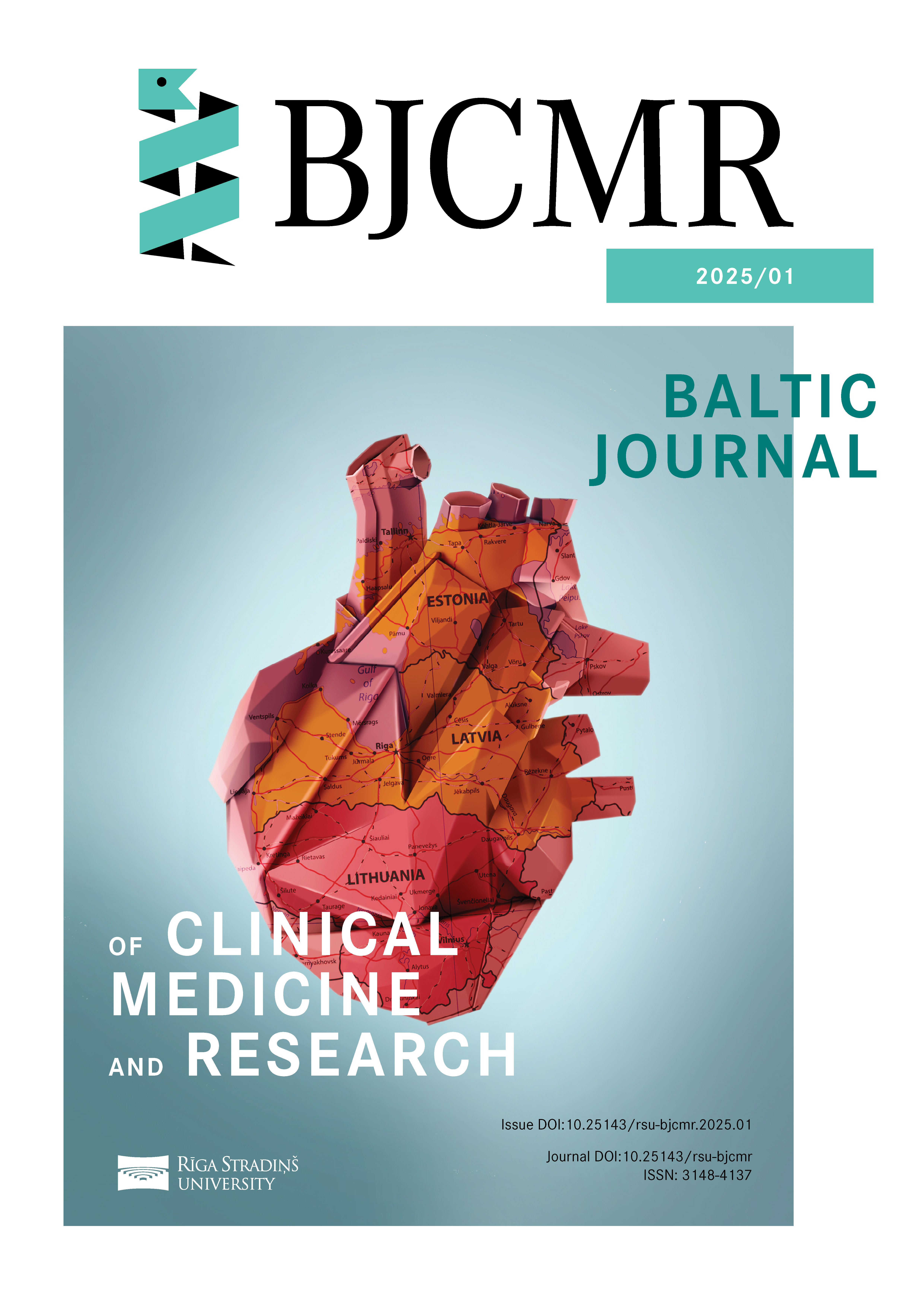Lyme Neuroborreliosis in Children Hospitalized in Children’s Clinical University Hospital in 2018–2022: Epidemiology, Diagnostics and Treatment
DOI:
https://doi.org/10.25143/rsu-bjcmr.2025.01.001-008Keywords:
Lyme disease, Neuroborreliosis, Borrelia burgdorferi infection, Facial palsy, Meningitis, ChildrenAbstract
Introduction. Lyme disease is the most common tick-borne infection in Europe. Neuroborreliosis is seen in approximately 10-12% of all Lyme disease cases in children. Nevertheless, there are very few studies regarding Lyme neuroborreliosis especially concerning the paediatric population.
Aim of the study. The aim of this study is to determine the most common symptoms, diagnostic and treatment strategies of Lyme neuroborreliosis in pediatric population.
Materials and methods. A retrospective study was made including 49 patients 28 days to 18 years of age with diagnosis A69.2 (Lyme disease according ICD10) and neurologic symptoms admitted to the Children’s Clinical University Hospital from 2018 to 2022. Data was collected from Andromeda hospital database and analysed using IBM SPSS Statistics version 29.0 (p<0.05).
Results. During the study period 158 children with Lyme disease were diagnosed in Latvia. 69 patients were hospitalized in Children’s Clinical University hospital with Lyme disease diagnosis, of which 71% presented with neurological symptoms (n=49). The median age of patients was 7 (Q1; Q3 4,75-13,25) years, 47% were females (n=23) and 53% were males (n=26). 22% were identified as “definite” Lyme neuroborreliosis (n=11), while 49% (n=24) were identified as “possible” Lyme neuroborreliosis and 29% were identified as “not confirmed” Lyme neuroborreliosis according to diagnostic criteria. The most common clinical manifestation of neuroborreliosis was facial paresis, which was diagnosed in 39% (n=19) followed by meningitis, which was diagnosed in 35% of the cases (n=17). Both meningitis and facial paresis simultaneously were diagnosed in 12% of the cases (n=6). Ceftriaxone was used in 69% of the cases (n=34), in 12% of the cases doxycycline was used (n=6). Both drugs were used in 12% (n=6), while in 6% of the cases none of these drugs were used (n=3).
Conclusions. Most common clinical presentations of Lyme neuroborreliosis in children were facial paresis and meningitis, which corresponds well with the literature. Management of Lyme neuroborreliosis remains challenging and a more definite diagnostic algorithm should be emphasized among different specialists.
Keywords: Borrelia burgdorferi infection, Lyme disease, facial palsy, meningitis, children
Downloads
Published
Issue
Section
License
Copyright (c) 2025 Baltic Journal of Clinical Medicine and Research

This work is licensed under a Creative Commons Attribution-NonCommercial-ShareAlike 4.0 International License.


